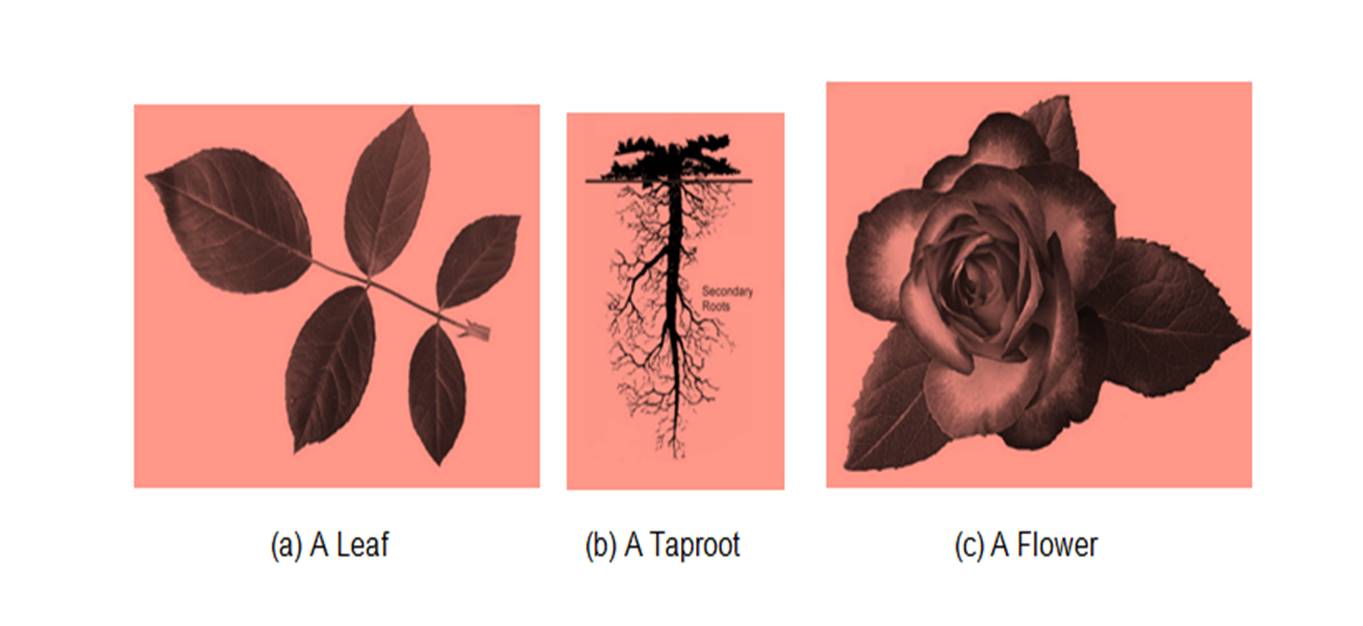Science
(www.olympiadsuccess.com)
Chapter 7: Getting To Know Plants
Class: VI
NCERT solutions
Question 1
Correct the following statements and rewrite them in your notebook.
(a) Stem absorbs water and minerals from the soil.
(b) Leaves hold the plant upright.
(c) Roots conduct water to the leaves.
(d) The number of petals and sepals in a flower is always equal.
(e) If the sepals of a flower are joined together, its petals are also joined together.
(f) If the petals of a flower are joined together, then the pistil is joined to the petal.
Answer 1
(a) Roots absorb water and minerals from the soil.
(b) Stem holds the plant upright.
(c) Stem conduct water to the leaves.
(d) The number of petals and sepals in a flower is not always equal.
(e) If the sepals of a flower are joined together, its petals are separate and not joined together.
(f) If the petals of a flower are joined together, then the pistil is not necessarily joined to the petal.
Question 2
Draw (a) a leaf, (b) a taproot and (c) a flower, you have studied for Table 7.3.
Answer 2

Question 3
Can you find a plant in your house or in your neighborhood, which has a long but a weak stem? Write its name. In which category would you classify it?
Answer 3
Money Plant has a ling but weak stem. It is a climber.
Question 4
What is the function of a stem in a plant?
Answer 4
Functions of stem in a plant:
Question 5
Which of the following leaves have reticulate venation? Wheat, tulsi, maize, grass, coriander (dhania), China rose
Answer 5
Tulsi, Coriander (Dhania) and China rose.
Question 6
If a plant has fibrous root, what type of venation does its leaves likely to have?
Answer 6
Parallel venation.
Question 7
If a plant has leaves with reticulate venation, what kind of roots will it have?
Answer 7
Taproot.
Question 8
Is it possible for you to recognize the leaves without seeing them? How?
Answer 8
Yes. We can identify the type of leaves by looking at its roots. Plants having leaves with reticulate venation have tap roots while plants having leaves with parallel venation have fibrous roots.
Question 9
Write the names of the parts of a flower.
Answer 9
The parts of a flower are sepals, petals, stamens and pistil.
Question 10
Which of the following plants have you seen? Of those that you have seen, which one has flowers?
Grass, maize, wheat, chilli, tomato, tulsi, pipal, shisham, banyan, mango, jamun, guava, pomegranate, papaya, banana, lemon, sugarcane, potato, groundnut
Answer 10
We have seen the following plants:
Plants having flowers:
Question 11
Name the part of the plant which produces its food. Name this process.
Answer 11
Leaves produce food for plant with the process of photosynthesis.
Question 12
In which part of a flower, you are likely to find the ovary?
Answer 12
Ovary is located in the lowermost and swollen part of the pistil of flower.
Question 13
Name two flowers, each with joined and separated sepals.
Answer 13
Plants with joined sepals : Datura and Tomato flower.
Plants with separated sepals : Lotus and Rose.
Yearlong program for Olympiads preparation & to build necessary skills for future.
Explore More
Time to mark your calendar with the upcoming Olympiads exam schedule.
Explore More
Take your Olympiad preparation to next-level by taking LIVE Classes.
Explore More
Assess your performance by taking topic-wise and full length mock tests.
Explore More
Online tuitions for international compeitions like SASMO, SEAMO, etc for Grades 1-11.
Explore More